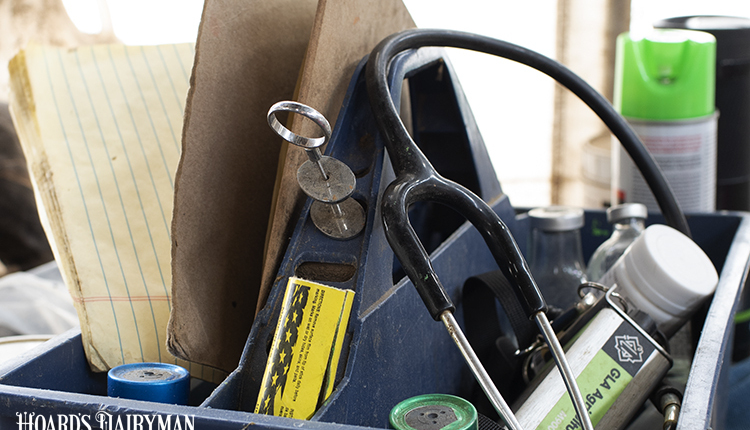
All the physical and metabolic changes that take place at calving cause stress on a cow’s immune system and elevate the risk for developing metabolic disorders. These problems not only affect milk production, health, and efficiency in the current lactation, but they can also have long lasting effects that linger into the future.
“The overall goal is to maximize performance and maintain health of these transition cows,” said Margaret Quaassdorff, a regional dairy specialist for Cornell Cooperative Extension, during a transition cow webinar. This means watching for disorders such as ketosis, displaced abomasum, metritis, hypocalcemia, and mastitis.
All fresh cows should be monitored, but Quaassdorff said to pay extra attention to cows that had a difficult calving, or those that delivered twins or a stillborn calf. Other higher risk cows include those with a retained placenta, lameness, or mastitis, or those that calve in overweight. Cows in their third lactation or greater are also more likely to face fresh cow problems.
The ability to monitor fresh cows starts with the right tools. Quaassdorff recommended gathering supplies into a toolbelt, including a digital thermometer with a rounded tip, ketone strips, sleeves in case a rectal exam is needed, a stethoscope, and chalk or paint in case a cow needs to be marked. A clipboard and pen with list of fresh cows is useful, too.
Also helpful is information about the cows that are being checked so you have a better picture of what you are looking for. This includes any notes about a difficult calving or current treatments. Milk production data also helps determine if a cow is headed in the right direction, as milk weights should be increasing in early lactation, Quaassdorff reminded.
The fresh cow check begins with some visual observations, watching to see if cows are eating and ruminating. A look at the eyes and ears can help determine if a cow is feeling well or if further investigation is needed. Checking for manure consistency, rumen fill, and abnormal uterine discharge should be completed at this point as well.
Once cows are secured in a stall or headlock, the physical exam can take place. A cow’s temperature should be between 100.5°F and 102.5°F. A cow with a temperature greater than that could be fighting an infection. A lower temperature might indicate milk fever.
From the side of the cow, watch the nostrils to gather a respiratory rate. A cow should take between 26 to 50 breaths per minute. The rate could be on the higher side if a cow is experiencing pain, heat stress, or respiratory disease.
Then, use a stethoscope to listen to the heart rate, which has a normal range of 48 to 84 beats per minute. Next, move to the triangle area behind the last rib. Listen for three thunderous contractions per minute. If you hear no sounds, it means the rumen is not working well, Quaassdorff noted. Gurgling sounds could be a sign of digestive upset.
To check for a displaced abomasum, press the stethoscope on the side of the cow and use your fingers to flick firmly in the area. Listen for a “pinging” noise that sounds like a basketball bouncing or water dripping in a steel bucket, she said. This noise can indicate the presence of a displaced abomasum and the need for veterinary assistance.
Diseases that affect fresh cow health and productivity can also be very costly to the farm, Quaassdorff noted. For these reasons, she said it is important to screen fresh cows for health challenges and make meaningful management changes as needed to improve their transition into lactation.








